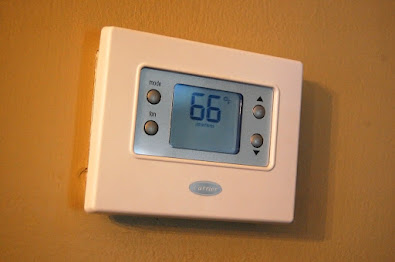Tips On How To Fix A Loud Gas Furnace
Gas furnaces aren't only great for heating homes but also great tools for keeping warm during winter. As such, many homeowners rely upon the furnace to heat their entire house. That means that an efficient and reliable gas furnace is essential. However, there are times when problems may occur with your furnace, especially during cold weather.
Several things can happen during extreme temperatures; one of these is that your gas furnace might fail. If yours fails, don't panic. This guide will teach you everything you need to know about fixing a loud gas furnace.
What Can Go Wrong With My Gas Furnace During Winter Months?
While most gas furnaces run fine during extremely cold winters, occasional issues arise due to temperature extremes. Here are the top three things that can go wrong with your furnace during winter.
#1. Leaks
Leaks occur more often during colder weather because water expands as it freezes. Since the air inside a gas furnace has a higher density than liquid water (water has 100% relative humidity), leaks will cause the furnace to fill up quickly. Depending on the size of your leak, you may notice a noticeable drop in your indoor thermostat setting.
#2. Airflow Issues
When your furnace leaks, it becomes difficult for fresh air to flow properly. Without proper ventilation, moisture begins to collect within your home. In addition, since drywall and insulation materials expand when exposed to cold temperatures, your walls might crack or develop holes. These conditions can lead to mold growth over time. As a result, you might smell something foul in your home.
#3. Excessive Heat Output
As mentioned earlier, sometimes, during cold weather, your furnace can produce too much heat, causing damage to your home. While it's normal for heat output to rise when it gets colder, excessive heat production results in longer-lasting power surges. These surges may result in damaged wires and appliances.
How Do I Know If My Gas Furnace Has Failed?
Several signs indicate whether or not your furnace is working correctly. Here are the top pointers.
#1. Faulty Thermostats/Thermometers
Normally, your gas furnace should maintain a steady thermostat reading without fluctuating wildly. If your thermostat reads below 55 degrees Fahrenheit, then chances are that you've experienced a problem. Furthermore, the readings for your thermometer can tell you whether or not your gas furnace is operating effectively. If the readings reach 110 degrees Fahrenheit, you have a serious issue.
#2. High-Temperature Setting
A problem with your furnace usually manifests itself in a high-temperature setting. For example, if your gas furnace has a maximum temperature setting of 1120 degrees F., you have a serious problem. If the setting reaches this level, your furnace runs its maximum capacity, leading to overheating. Therefore, you should contact your local HVAC technician immediately if you see a high temperature setting above 1200 degrees Fahrenheit.
#3. Short Electricity Supply
Usually, electricity goes out more frequently during harsh weather. If your power supply runs low, this could mean that your furnace is malfunctioning. If your power supply drops too low, you should turn off any nearby electrical devices. Also, open windows and doors to let cool air into your home.
#4. Blowing Smoke
Blowing smoke indicates that your furnace requires maintenance. If your furnace starts producing black smoke, you should call your local HVAC service provider immediately. They can perform repairs and ensure that your furnace operates efficiently again.
In conclusion, if your furnace is making too much noise, there are some simple steps you can take to fix the problem.





Comments
Post a Comment